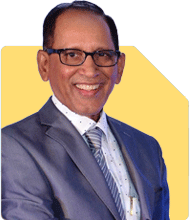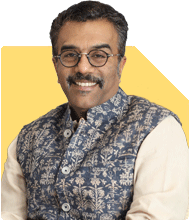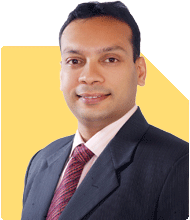R P Yadav | Answer |Ask -Follow
HR, Workspace Expert - Answered on Feb 28, 2023
Over the years, he has been the recipient of numerous awards including the Lifetime Achievement Award from World HR Congress and HR Person Of The Year from Public Relations Council of India.
... more

Dear Mr R P YAdav I have finshed B ARCH with much interested in design and creative field. I realised the problem in 2nd yr itself but some how continued and finished the graduation. I took the admission in B ARCH are 12 commerce. During all the 5 years i felt like I should have done CA or MBA. Can you tell me what options I have now to change my filed to commerce/related areas
You may like to see similar questions and answers below
Patrick Dsouza |1338 Answers |Ask -Follow
CAT, XAT, CMAT, CET Expert - Answered on Mar 23, 2024
Chocko Valliappa |514 Answers |Ask -Follow
Tech Entrepreneur, Educationist - Answered on Jun 06, 2024
Krishna Kumar | Answer |Ask -Follow
Workplace Expert - Answered on Aug 27, 2024
Radheshyam Zanwar |5909 Answers |Ask -Follow
MHT-CET, IIT-JEE, NEET-UG Expert - Answered on Sep 26, 2024
Patrick Dsouza |1338 Answers |Ask -Follow
CAT, XAT, CMAT, CET Expert - Answered on May 14, 2025
Dr Nagarajan J S K |2026 Answers |Ask -Follow
NEET, Medical, Pharmacy Careers - Answered on Jul 28, 2025
Dr Nagarajan J S K |2026 Answers |Ask -Follow
NEET, Medical, Pharmacy Careers - Answered on Jul 28, 2025
Dr Nagarajan J S K |2026 Answers |Ask -Follow
NEET, Medical, Pharmacy Careers - Answered on Jul 28, 2025
Dr Nagarajan J S K |2026 Answers |Ask -Follow
NEET, Medical, Pharmacy Careers - Answered on Jul 28, 2025
Nayagam P P |9586 Answers |Ask -Follow
Career Counsellor - Answered on Jul 28, 2025
Nayagam P P |9586 Answers |Ask -Follow
Career Counsellor - Answered on Jul 28, 2025
Nayagam P P |9586 Answers |Ask -Follow
Career Counsellor - Answered on Jul 28, 2025
Nayagam P P |9586 Answers |Ask -Follow
Career Counsellor - Answered on Jul 28, 2025
Nayagam P P |9586 Answers |Ask -Follow
Career Counsellor - Answered on Jul 28, 2025
Nayagam P P |9586 Answers |Ask -Follow
Career Counsellor - Answered on Jul 28, 2025





















